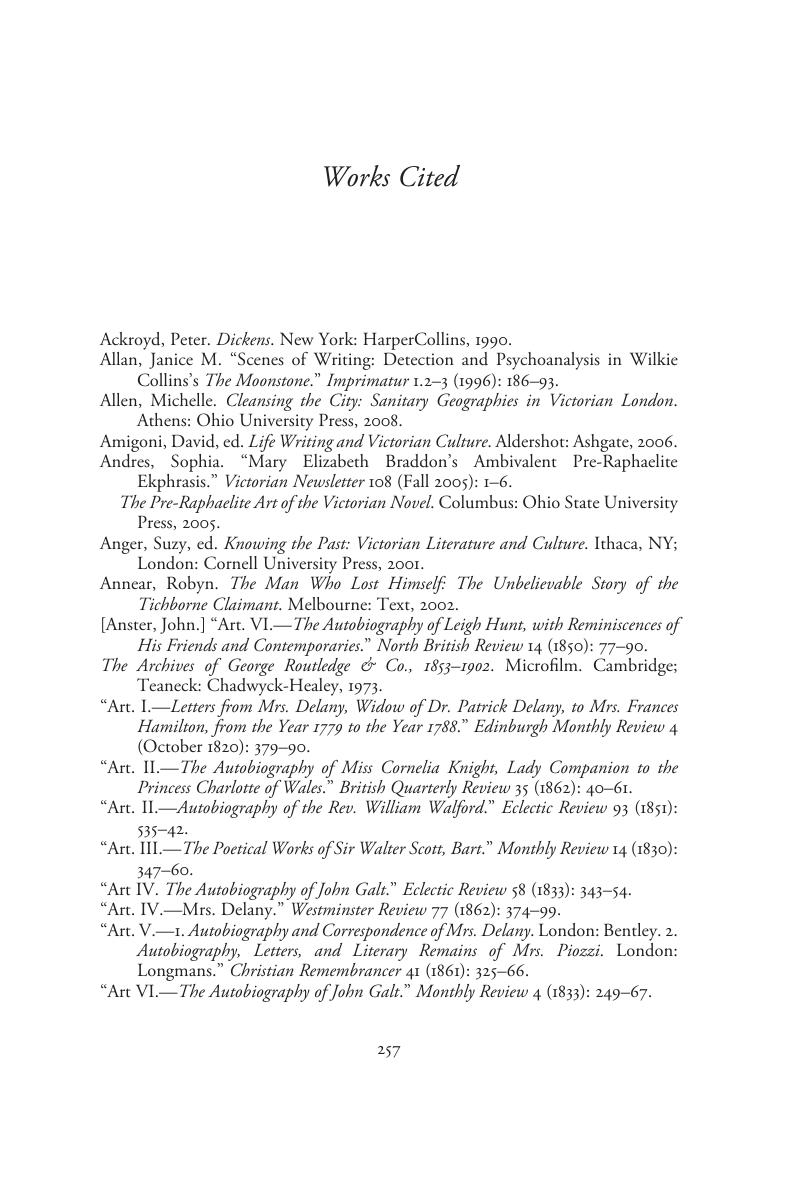 The Commodification of Identity in Victorian Narrative
The Commodification of Identity in Victorian Narrative Book contents
- The Commodification of Identity in Victorian Narrative
- Cambridge Studies in Nineteenth-century Literature and Culture
- The Commodification of Identity in Victorian Narrative
- Copyright page
- Dedication
- Contents
- Figures
- Acknowledgments
- Introduction Life Upon the Exchange: Commodifying the Victorian Subject
- Chapter 1 “A Vile Symptom”: Autobiography and the Commodification of Identity
- Chapter 2 “Portable Property”: Commodity and Identity in Great Expectations
- Chapter 3 Lady Audley’s Portrait: Textuality, Gender, and Power
- Chapter 4 Amnesia, Madness, and Financial Fraud: Ontologies of Loss in Silas Marner and Hard Cash
- Chapter 5 “What Money Can Make of Life”: Willing Subjects and Commodity Culture in Our Mutual Friend
- Chapter 6 The Moonstone, Sacred Identity, and the Material Self
- Conclusion Money Made of Life: The Tichborne Claimant
- Appendix
- Notes
- Works Cited
- Index
- Cambridge Studies in Nineteenth-Century Literature and Culture
- References
Works Cited
Published online by Cambridge University Press: 24 October 2019
- The Commodification of Identity in Victorian Narrative
- Cambridge Studies in Nineteenth-century Literature and Culture
- The Commodification of Identity in Victorian Narrative
- Copyright page
- Dedication
- Contents
- Figures
- Acknowledgments
- Introduction Life Upon the Exchange: Commodifying the Victorian Subject
- Chapter 1 “A Vile Symptom”: Autobiography and the Commodification of Identity
- Chapter 2 “Portable Property”: Commodity and Identity in Great Expectations
- Chapter 3 Lady Audley’s Portrait: Textuality, Gender, and Power
- Chapter 4 Amnesia, Madness, and Financial Fraud: Ontologies of Loss in Silas Marner and Hard Cash
- Chapter 5 “What Money Can Make of Life”: Willing Subjects and Commodity Culture in Our Mutual Friend
- Chapter 6 The Moonstone, Sacred Identity, and the Material Self
- Conclusion Money Made of Life: The Tichborne Claimant
- Appendix
- Notes
- Works Cited
- Index
- Cambridge Studies in Nineteenth-Century Literature and Culture
- References
Summary

- Type
- Chapter
- Information
- The Commodification of Identity in Victorian NarrativeAutobiography, Sensation, and the Literary Marketplace, pp. 257 - 270Publisher: Cambridge University PressPrint publication year: 2019


